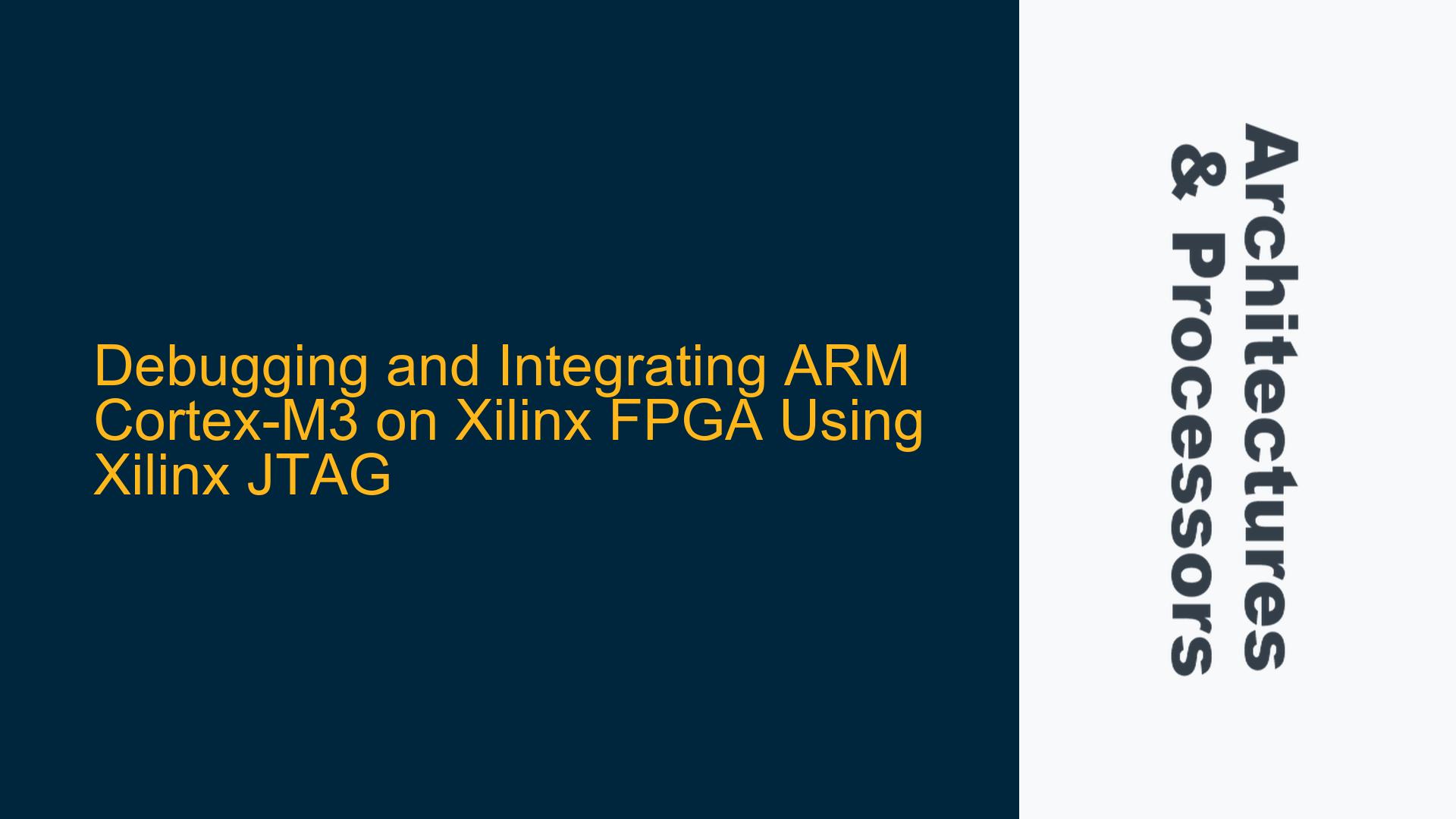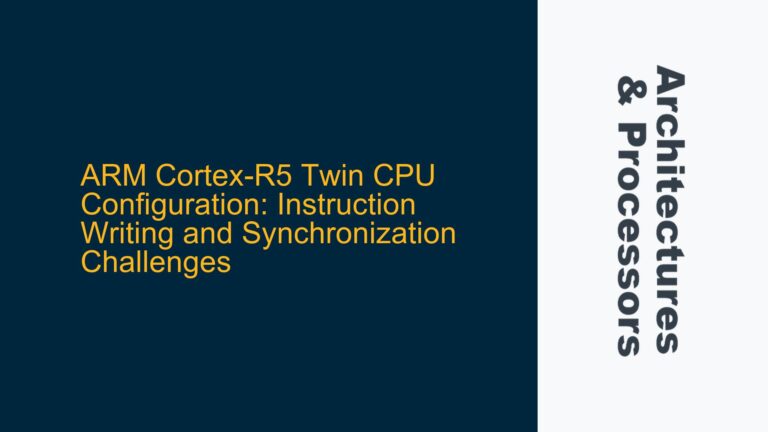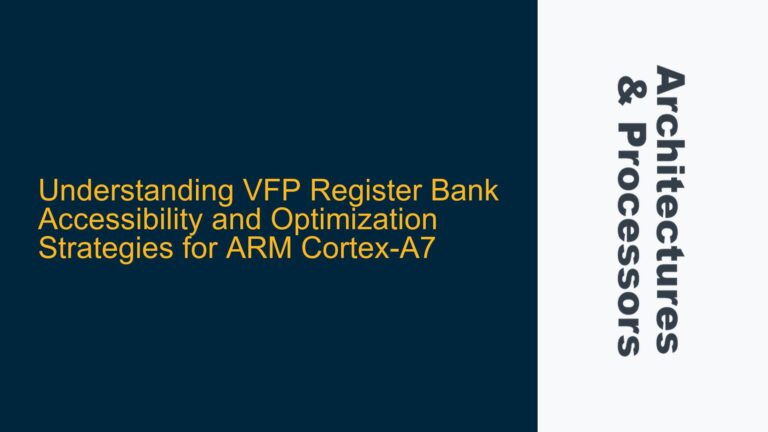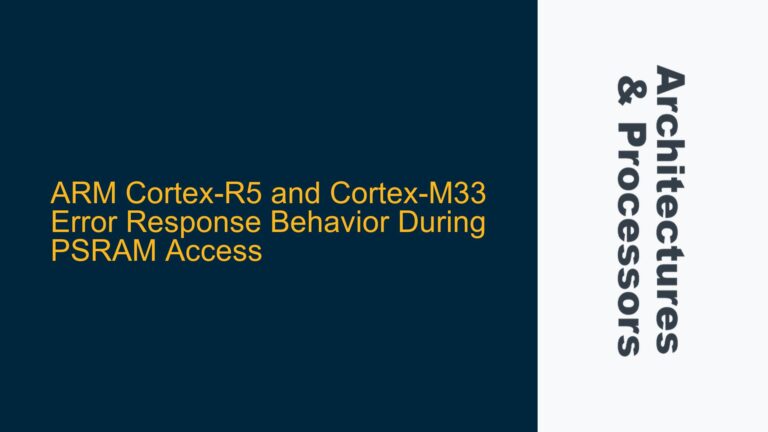ARM Cortex-M3 Integration and Debugging Challenges on Xilinx FPGA
Integrating an ARM Cortex-M3 processor into a Xilinx FPGA, such as the Kintex-7, presents a unique set of challenges, particularly when it comes to software development and debugging. The primary issues revolve around the toolchain compatibility, JTAG access, and the interchangeability of ARM Cortex-M3 with other processors like MicroBlaze. This guide will delve into the specifics of these challenges, explore their root causes, and provide detailed troubleshooting steps and solutions.
Toolchain Compatibility and Software Development for ARM Cortex-M3 on Xilinx FPGA
The first major challenge is determining the appropriate toolchain for software development when integrating an ARM Cortex-M3 processor into a Xilinx FPGA. The assumption that only Keil uVision can be used for this purpose is a common misconception. While Keil uVision is a robust and widely-used tool for ARM development, it is not the only option available.
Xilinx SDK, part of the Vivado Design Suite, can also be used for software development targeting the ARM Cortex-M3 processor. Xilinx SDK supports a variety of processors, including ARM Cortex-M series, and provides a comprehensive environment for developing, debugging, and optimizing embedded software. The key is to ensure that the correct processor configuration and debug settings are applied within the Xilinx SDK environment.
To use Xilinx SDK for ARM Cortex-M3 development, you need to configure the project settings to target the ARM Cortex-M3 processor. This involves specifying the correct processor type, memory map, and debug interface in the Xilinx SDK project settings. Additionally, you may need to import or create a Board Support Package (BSP) that is compatible with the ARM Cortex-M3 processor.
JTAG Access and Debugging ARM Cortex-M3 on Xilinx FPGA
The second challenge is related to JTAG access and debugging. The ARM Cortex-M3 processor requires a dedicated JTAG connection for debugging, which can be a point of confusion when integrating it into a Xilinx FPGA design. The documentation suggests that a separate JTAG needs to be connected exclusively for the processor, but this is not strictly necessary.
It is possible to use the same Xilinx JTAG for both the ARM Cortex-M3 processor and the rest of the FPGA. This can be achieved by configuring the FPGA design to include a Debug Access Port (DAP) that interfaces with the ARM Cortex-M3 processor. The DAP allows the Xilinx JTAG to access the ARM Cortex-M3 debug interface, enabling you to debug the processor without the need for a separate JTAG connection.
To implement this, you need to ensure that the FPGA design includes the necessary components to support the DAP. This typically involves adding a Debug Hub or similar component to the FPGA design, which acts as a bridge between the Xilinx JTAG and the ARM Cortex-M3 debug interface. Once the design is configured correctly, you can use the Vivado Tcl shell or Xilinx SDK to access and debug the ARM Cortex-M3 processor.
Interchangeability of ARM Cortex-M3 and MicroBlaze in Xilinx FPGA Designs
The third challenge is the interchangeability of ARM Cortex-M3 and MicroBlaze processors in Xilinx FPGA designs. While both processors are popular choices for embedded systems, they have different architectures and toolchains, which can complicate the design process.
ARM Cortex-M3 is a RISC-based processor with a well-defined instruction set and a rich ecosystem of development tools. MicroBlaze, on the other hand, is a soft-core processor designed specifically for Xilinx FPGAs, with a different instruction set and toolchain. Despite these differences, it is possible to use both processors in the same design with some modifications to the tool flow.
To achieve this, you need to ensure that the FPGA design is configured to support both processors. This involves creating separate hardware and software projects for each processor and ensuring that the memory map and peripheral interfaces are compatible. Additionally, you may need to modify the tool flow to support both processors, such as creating custom scripts or using a multi-processor debugging environment.
Implementing Data Synchronization Barriers and Cache Management
One of the critical aspects of integrating an ARM Cortex-M3 processor into a Xilinx FPGA design is ensuring proper data synchronization and cache management. The ARM Cortex-M3 processor includes a Memory Protection Unit (MPU) and optional cache, which can introduce complexities when interfacing with the FPGA fabric.
Data synchronization barriers are essential to ensure that data is correctly shared between the ARM Cortex-M3 processor and the FPGA fabric. These barriers prevent data corruption by ensuring that all memory operations are completed before proceeding to the next instruction. In the context of the ARM Cortex-M3, this involves using the Data Synchronization Barrier (DSB) and Instruction Synchronization Barrier (ISB) instructions.
Cache management is another critical aspect, particularly if the ARM Cortex-M3 processor includes an optional cache. The cache must be properly invalidated and flushed to ensure that data is correctly shared between the processor and the FPGA fabric. This involves using the Cache Maintenance Operations (CMO) provided by the ARM Cortex-M3 processor, such as cache invalidate, clean, and flush operations.
Detailed Troubleshooting Steps and Solutions
To address the challenges outlined above, follow these detailed troubleshooting steps and solutions:
-
Toolchain Configuration for ARM Cortex-M3 on Xilinx FPGA:
- Ensure that the Xilinx SDK is installed and configured correctly.
- Create a new project in Xilinx SDK and select the ARM Cortex-M3 processor as the target.
- Import or create a Board Support Package (BSP) that is compatible with the ARM Cortex-M3 processor.
- Configure the project settings, including the memory map and debug interface, to match the ARM Cortex-M3 processor configuration.
-
JTAG Access and Debugging Configuration:
- Ensure that the FPGA design includes a Debug Access Port (DAP) that interfaces with the ARM Cortex-M3 processor.
- Add a Debug Hub or similar component to the FPGA design to act as a bridge between the Xilinx JTAG and the ARM Cortex-M3 debug interface.
- Use the Vivado Tcl shell or Xilinx SDK to access and debug the ARM Cortex-M3 processor.
- Verify that the JTAG connection is correctly configured and that the ARM Cortex-M3 processor is accessible through the Xilinx JTAG.
-
Interchangeability of ARM Cortex-M3 and MicroBlaze:
- Create separate hardware and software projects for each processor in the FPGA design.
- Ensure that the memory map and peripheral interfaces are compatible between the ARM Cortex-M3 and MicroBlaze processors.
- Modify the tool flow to support both processors, such as creating custom scripts or using a multi-processor debugging environment.
- Verify that both processors can be accessed and debugged through the Xilinx JTAG.
-
Data Synchronization and Cache Management:
- Use Data Synchronization Barrier (DSB) and Instruction Synchronization Barrier (ISB) instructions to ensure proper data synchronization between the ARM Cortex-M3 processor and the FPGA fabric.
- Implement Cache Maintenance Operations (CMO) to manage the cache, including cache invalidate, clean, and flush operations.
- Verify that data is correctly shared between the ARM Cortex-M3 processor and the FPGA fabric by testing memory operations and cache behavior.
Conclusion
Integrating an ARM Cortex-M3 processor into a Xilinx FPGA design presents several challenges, particularly in terms of toolchain compatibility, JTAG access, and processor interchangeability. By following the detailed troubleshooting steps and solutions outlined in this guide, you can overcome these challenges and successfully integrate the ARM Cortex-M3 processor into your Xilinx FPGA design. Proper configuration of the toolchain, JTAG access, and data synchronization barriers is essential to ensure a robust and reliable implementation. With careful planning and attention to detail, you can leverage the power of the ARM Cortex-M3 processor in your Xilinx FPGA designs.






